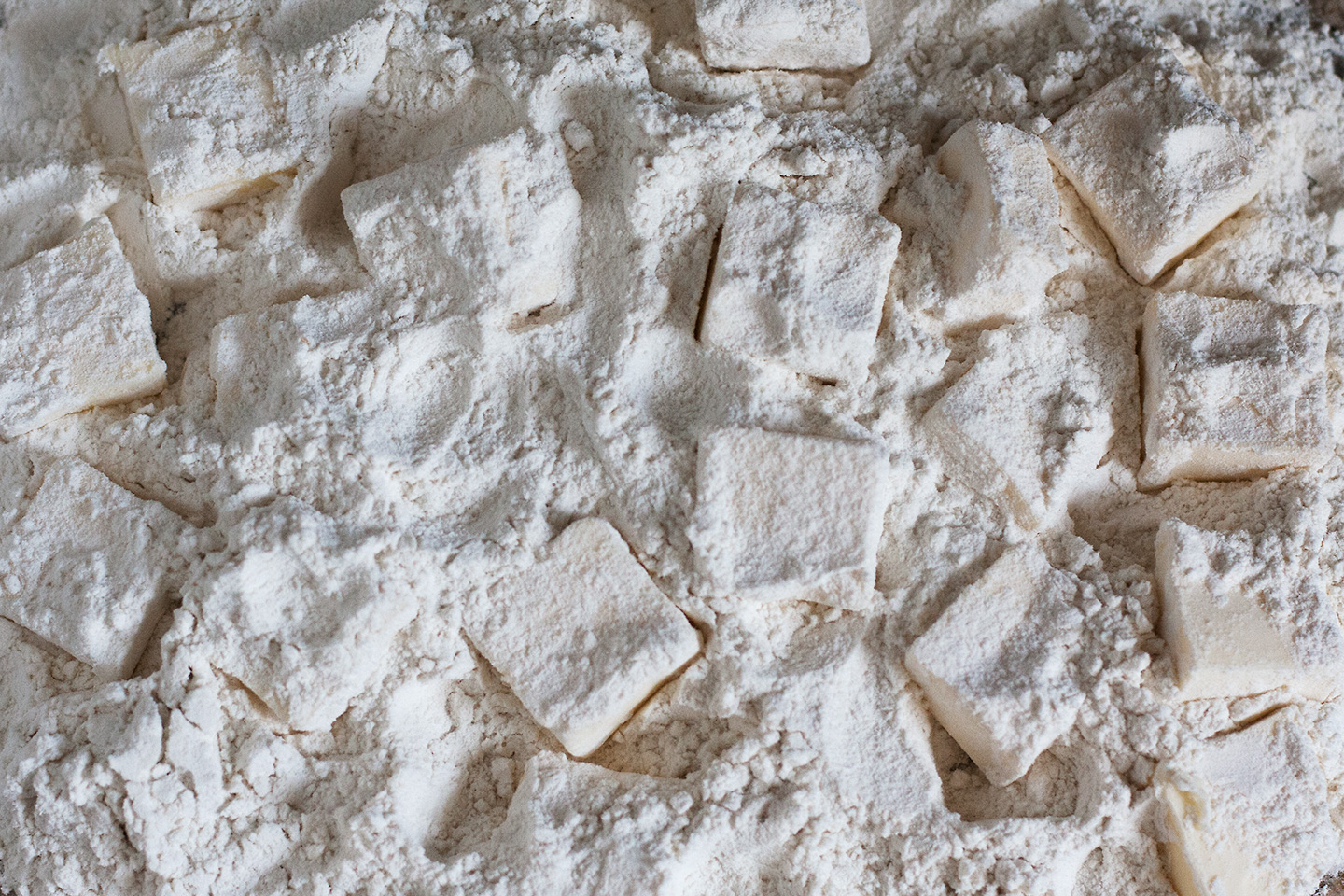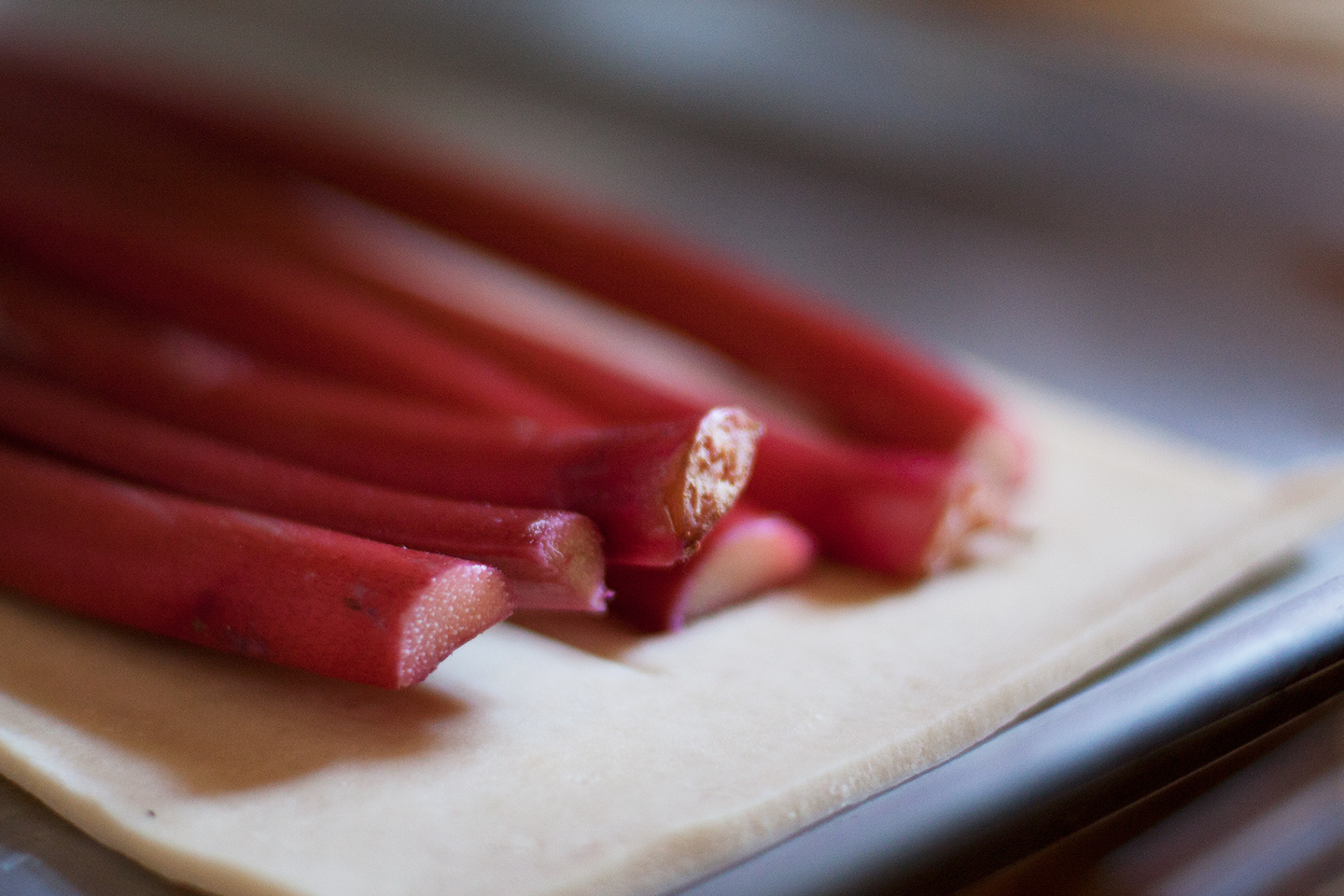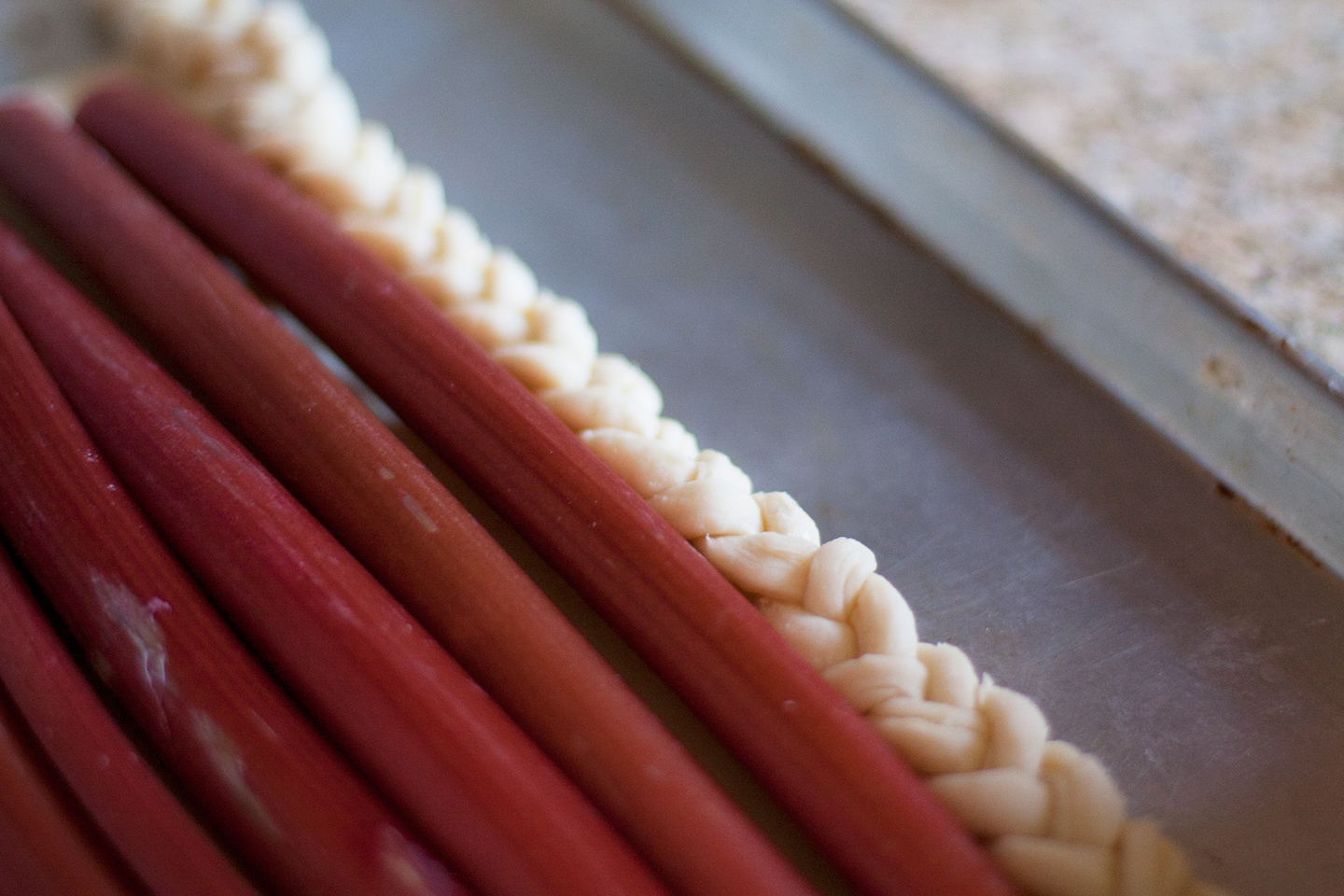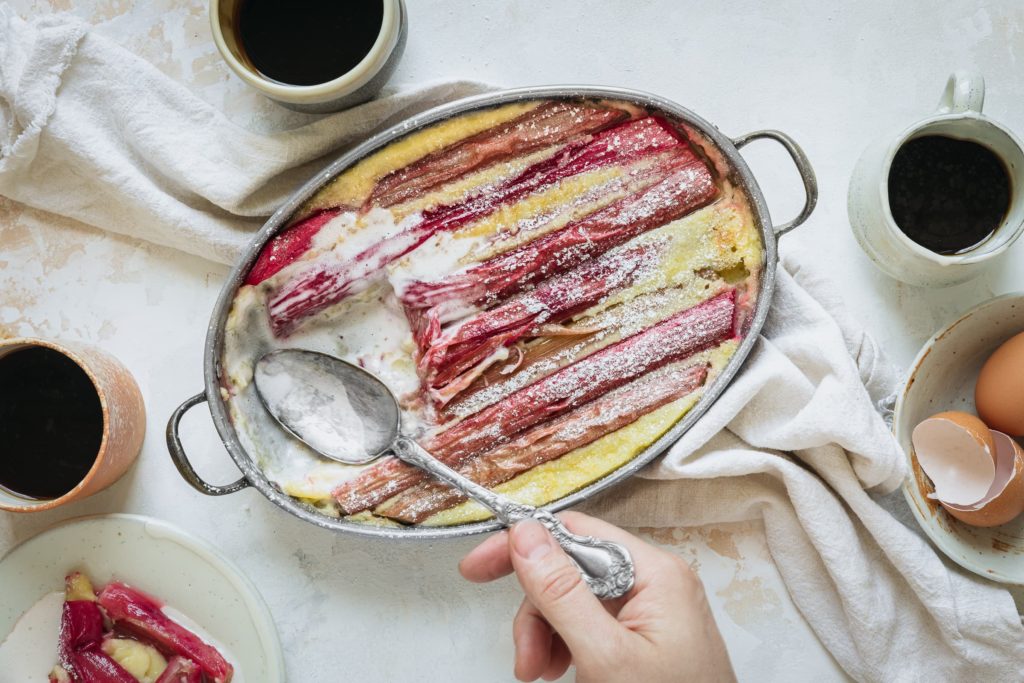Were you planning on making a pie this weekend? You were weren’t you. I know it. I wouldn’t blame you either. If there was ever a moment for making pie it would be right now. We’re in the height of spring, and the markets are filled with crisp rhubarb and ripe strawberries. We’re even starting to see cherries and peaches.
This is the stuff of pie-dreams.
But, I insist that you stop. Put down the pie plate and consider instead the humble galette. These rustic, free-form tarts are just as flaky – perhaps even more so – and considerably less work. No need to crimp and no more worries of a sunken, soggy crust. Not a fan of circles? Make it square.
That’s right, it’s pie made easier. Perfectly crispy, flaky perfection. Perfect.
So, if you will, put away the pie plate and pull out the baking pan. You won’t regret it.
I love to tinker in the kitchen taking part of this recipe and a little of that recipe to create something of my own. However, there are some things I won’t alter like this galette recipe. It comes from Elizabeth Pruitt, the pastry master mind behind one of my favorite bakeries, Tartine Bakery & Cafe in San Francisco, CA. I’ve tried a number of galette recipes, but can whole-heartedly say that this is the best hands-down.
When I first visited Tartine, I instantly feel in love with their galettes. Perfectly sweet and impossibly flaky, Elizabeth’s approach takes a bit more time than whizzing everything together in a food process (which is perfect for pie crust), but the result is absolutely worth it.
It starts like most flaky tart doughs with a ratio of 3 parts flour : 2 parts butter : 1 part water by weight.
Next, cold (and I mean COLD) butter is rolled in thin strips and folded into the flour before adding water to form a shaggy dough. The dough is rolled, folded on itself, and rolled out a few more times to form a cohesive dough. This step is critical and acts a bit like the laminating process for puff pastry or croissants. Don’t skip it. You DO want flaky galettes, rights? Of course, you do.
You see, the flour won’t stick to the cold butter creating little pockets in the dough. When it’s time to bake the galette, the heat of the oven will cause the water in the butter to turn to steam puffing up those buttery pockets creating light, flaky layers. No one likes a dense, hard crust. No one.
Once the dough is rolled out, it’s time to fill the galettes. What goes inside is completely up to you. Go nuts. You can easily fill one with cherries and the next with strawberries.
If you’ve spent .0001 seconds online you know the entire internet is screaming about the prevalence of rhubarb and with good the reason; rhubarb season is short. My local market had a nice selection and with Spring quickly dwindling into heat-stroke summer, I decided to take advantage. My baking buddy Blossom the Dog agrees it was the right thing to do.
To prepare the filling, clean and trim your fruit du jour. Taste it. Does it taste sweet? Then maybe add just a touch of sugar. Not that sweet? Add a bit more. A squeeze of lemon juice is encouraged.
Galettes are best served right out of the oven and better served with ice-cream.
Ingredients
- 455 g (2 cups) unsalted butter – very cold
- 8 oz (1 cup) water – very cold
- 7 ml (1 1/2 teaspoons) kosher salt
- 340 g (2 and 1/3 cups) all purpose flour
- 340 g (2 and 2/3 cups) all purpose flour
- 12-14 stalks of rhubarb – cleaned, trimmed, and cut into 1 inch pieces
- Granulated or brown sugar
- Lemon juice – if needed
- 2 large egg yolks
- 30 ml (1 tablespoon) heavy cream
Steps
To prepare the dough, cut the butter into 1-inch cubes and put them in the freezer. Measure the water, dissolve the salt into it, and put it in the freezer as well. Chill the butter and water for about 10 minutes.
Measure out all the flour onto your work surface and spread into a rectangle, about 1/3 inch deep. Scatter the butter cubes over the flour. Toss a little flour over the butter so that your rolling pin won’t stick and then begin rolling. When the butter starts flattening out into long, thin pieces, use a bench scraper to scoop up the sides of the rectangle so that it is again the size you started with. Repeat the rolling and scraping 3 or 4 times.
Make a well in the center of the flour and pour all of the water into the well. Using the bench scraper, scoop the sides of the dough onto the center, cutting (mixing in with the bench scraper) the water into the dough. Keep scraping and cutting until the dough is a shaggy mess, and then shape the dough into a rectangle about 10 by 14 inches. Lightly dust the top with flour. Roll out the rectangle until it is half again as large and then scrape the top, bottom, and sides together again to the original size and reroll. Repeat 3 of 4 times until you have a smooth, cohesive dough. You should now have a rectangle measuring about 10 by 14 inches. Transfer the dough to a large baking sheet, cover with plastic wrap, and chill well, about 1 hour.
While the dough is chilling, prepare the fruit.
When you are ready to roll out the dough, divide it into 2 equal portions if making large galettes or into 12 equal portions if making individual galettes.
To roll a circle from what is roughly a square, start out with the dough positioned like a diamond in front of you, with the handles of your rolling pin at 2 points of the square. Roll from the center toward each end, only flattening the center, not the 2 points; leave those 2 points thick.
Now turn the dough so that the flattened-out corners are facing towards you. Again, roll from the center towards the other 2 points keeping the ends thick. Now you should have a square with little humps between the pointy corners.
Roll out the ticker areas and you will begin to see a circle forming. Keep rolling until the dough is a little more than 1/8 inch thick for large galettes (each circle should be about 14 inches in diameter) and a little thinner for small galettes (each circle should be about 6 to 7 inches in diameter). Fold the large circles into quarters, transfer to a baking sheet, and unfold. Chill until firm, about 10 minutes.
Fill the center of each dough with fruit, leaving uncovered a border of 2 inches on the large circles and 1 inch on the small circles.
Taste the fruit for sweetness to determine how much sugar you want to use to sweeten it. Then sprinkle with granulated or brown sugar, about 2 to 4 tablespoons (20 to 60 ml) for each large galette or 1 to 2 teaspoons (5 to 10 ml) for each small galette. You may also want to add a squeeze of lemon juice.
Fold in the sides of the circles to partially cover the fruit. Chill until firm, about 10 minutes. Preheat the oven to 375°F.
While the galettes are chilling, make the egg wash. In a small bowl, whisk egg yolk and cream. When the oven is ready, remove the galettes from the freezer, brush the egg wash over the pastry edges, and then sprinkle with granulated sugar.
Bake the galettes until the crust has visibly puffed and baked to dark brown and the juice from the fruit is bubbling inside, about 45-60 minutes for large galettes and 40-50 minutes for small galettes. Rotate the baking sheets at the midway point to ensure even baking. Remove from the oven and serve hot or at room temperature.









Reader Interactions